Home.
May 2021 - Homebrew Double Balanced Mixers
In April I wrote about testing Schottky diodes using the method described by Charlie Morris ZL2CTM in his youtube video. The purpose of this was to make my own double balanced diode mixer as Charlie had done.
This
is something I've never done before so much reading entailed after the
simple mixer construction as shown in Charlie's video.
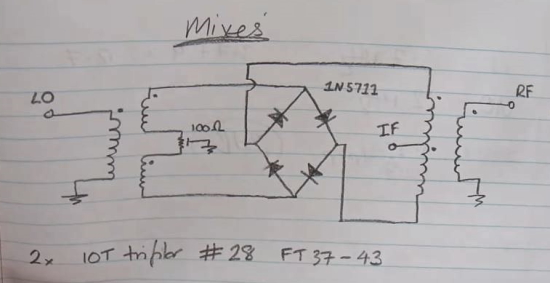
Just like with antennas, if you don't have a good impedance match then
you get reflected waves... it seems the same is true with mixers. So
they need to be properly terminated.
In his October 2012 PW article, George G3RJV makes a double balance
mixer in a mint tin as a utility device. It is not dedicated to a
particular intermediate frequency and so he provides I.F. port
termination with a resistor. (shown below). He says "Ideally a full
diplexer circuit should be added to the output, but " (he said) "this
simple 50 ohm termination works for most applications".
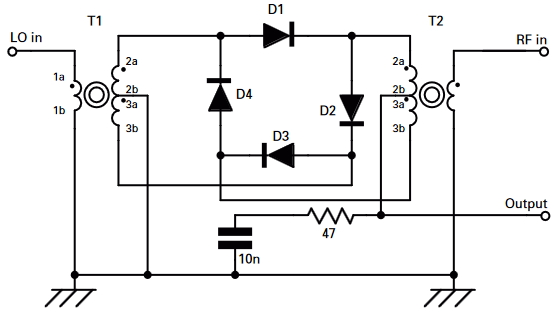
This was my experimental mixer.
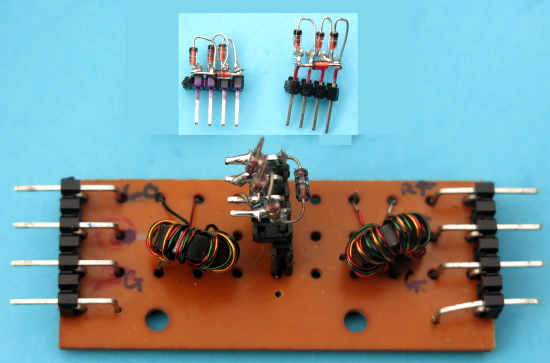
I designed it as a "test bed". The idea being that I could try various sets of diodes by creating "plug in" matched sets. The use of a dab of different coloured nail varnish identifies which set is which.
The intermediate frequency port (in my example) has the
chosen intermediate frequency of 9MHz.
Ideally, all frequencies would see a 50 ohm
termination - and therefore there would be no reflected waves back into
the mixer to cause undesirable effects like noise.
But while a resistor
is fine for all other frequencies, we ideally need the diplexer to be
"opaque" to 9MHz and therefore allow the following stage to provide the
termination.
There are a number of diplexer designs, but the one that I tried was recommended by Bob Burns G3OOU on his website.
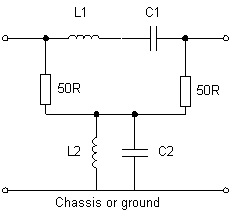
Bob's website shows a pretty symmetrical device and the tuned
circuit values are chosen such that they resonate at the I.F. frequency.
This is described elsewhere as an excellent bandstop/bandpass diplexer originally popularized by Joe Reisert W1JR
Essentially, the signals coming from the mixer pass through if they are
at the intermediate frequency and are terminated by the 50 ohm
resistors otherwise.
As with the mixer, I built my version of the diplexer as a form of test bed with plug in tuned circuits so
that I could later develop a diplexer for any frequency that I wanted before
making a permanent version. The 50 ohm resistors are located underneath
the PCB in the form of surface mount devices.
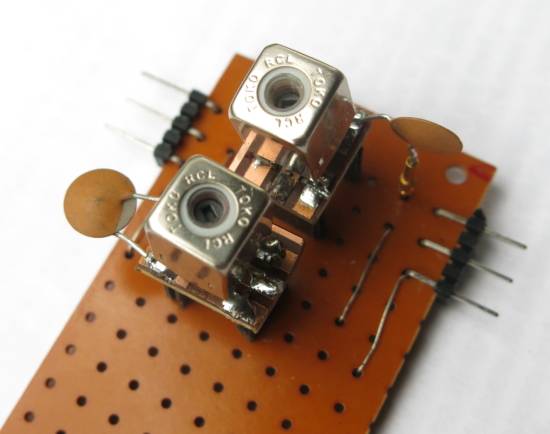
The Toko coils are from the junk box but Bob Burns gives values in his article.
I set up my test equipment as shown below to measure the mixer performance.
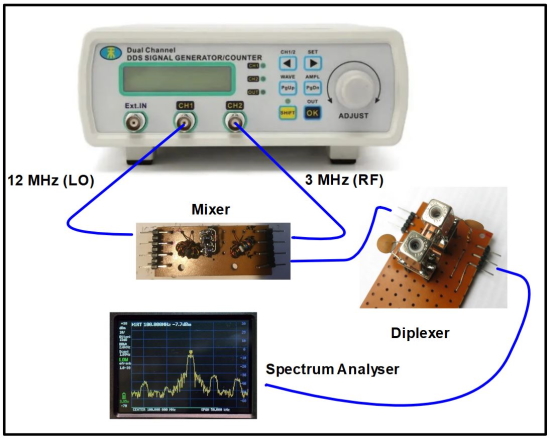
Charlie Morris ZL2CTM had set his testsignal levels as follows. 12 MHz (LO) was 1.4 volts
(+7dBm) and the RF port was set to 0.20 volts. My signal generator
presents 50 ohms on each output.
On the output of the diplexer I connected a 50 ohm resistor to simulate
the impedance that a following stage would present - and this was
then measured.
In the previous article I show that I selected two sets of diodes. One
using a meter with three digit precision and the other set with my new
meter that has four digits. As described above, I was able to swap between the sets. This was especially useful because later I
was able to compare those with a matched set from Hewlett Packard that
a friend had given me. When he originally bought them they cost £10 per set!
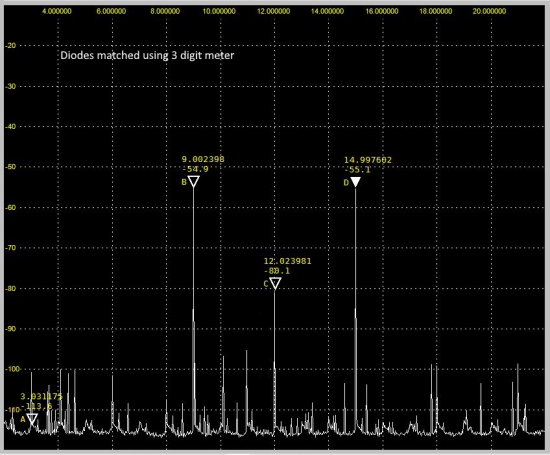


Update: January 2022.
Nick M0NTV is beginning a series of videos that describe his experience of building home brew mixers and diplexers - showing once again that you should not feel limited to buying the commercial kind.
Another good tutorial series is from Pete N6QW made in 2014. Part 1 is the introduction, Part 2 shows how to wind the transformers, and Part 3 shows how to connect it all up using a simple board using "MeSquares". (Available from the GQRP club and QRPMe.